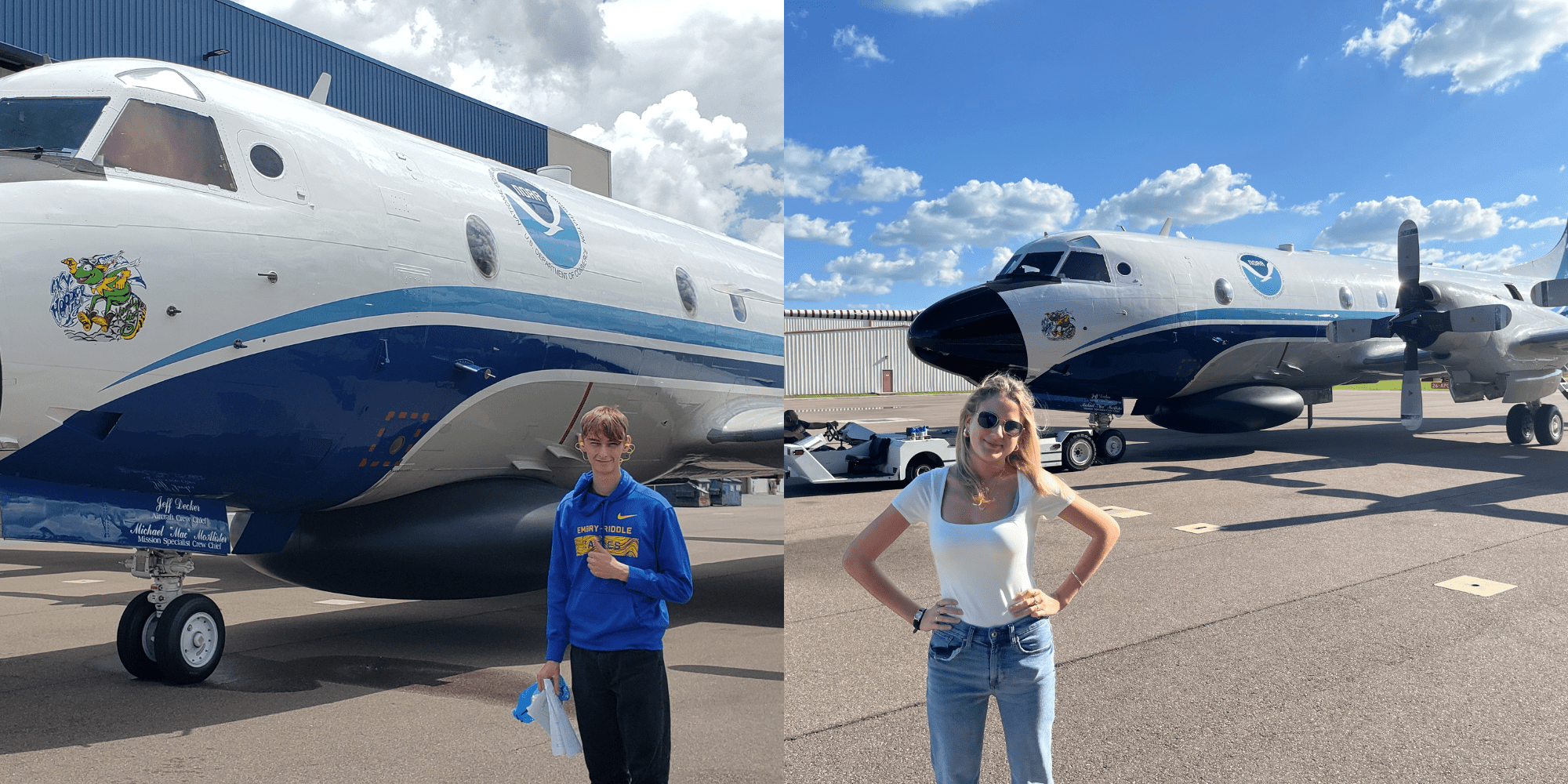

Flying Into the Future: A Student’s Experience on NOAA’s WP-3D Orion
Student Guest Blog
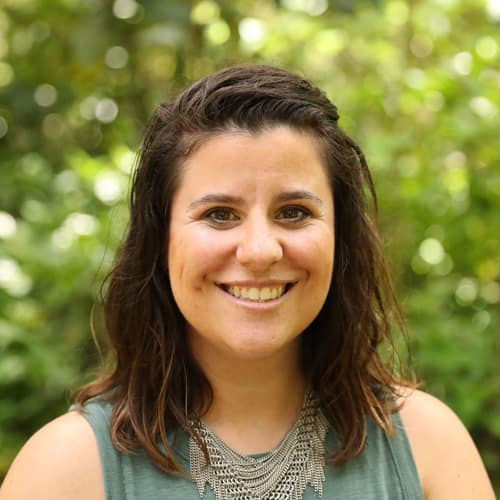
When most people think of hurricane research, they don’t picture flying straight into the heart of the storm. But for scientists at NOAA (the National Oceanic and Atmospheric Administration), it’s just another day on the job.
One of the key tools in their mission to better understand and forecast tropical cyclones is the WP-3D Orion aircraft, often referred to as the “P-3.” These powerful planes, nicknamed "Hurricane Hunters," are equipped with an array of instruments that gather critical data from inside storms, helping researchers improve models and potentially save lives.
This summer, Embry-Riddle undergraduate students Danica Marr (‘26) and Lannon McGregor (‘26) and alumnus Sean Barnier (‘25) had the rare opportunity to fly aboard one of these iconic aircraft as part of their research with Dr. Joshua Wadler, assistant professor of meteorology in the Department of Applied Aviation Sciences.
"Getting students opportunities to conduct fieldwork allows them to fully understand how the data they use in their research is obtained and the way decisions are made in the airplane," Dr. Wadler said.
We’re excited to welcome Danica and Sean as guest bloggers to share their experiences.
By Danica Marr
As part of my undergraduate research with Dr. Joshua Wadler, I had the opportunity to fly on NOAA’s WP-3D Orion aircraft this summer. The flight took off from Lakeland, Florida, and was a test mission designed to evaluate instruments we plan to deploy during the upcoming hurricane season. These test flights are essential for ensuring that the instruments are functioning correctly and capable of collecting accurate data in real storm conditions.
An Eye-Opening Experience
I found the experience to be incredibly fascinating and valuable. I learned how critical these test missions are in preparing for operational flights during hurricane season. Observing the process of data collection helped me better understand the connection between field operations and the datasets we use in tropical cyclone research.
One of the highlights was speaking with a flight director who took the time to explain the responsibilities of each crew member. While the pilots and navigators focus on the safety of everyone on board, the researchers are busy testing onboard instruments and gathering data. The success of each mission clearly depends on strong coordination and communication across the entire team.
Why I Wanted to Fly
My undergraduate research at Embry-Riddle focuses on the influence of storm structure, specifically how precipitation distributions contribute to the rapid intensification (RI) of hurricanes. This work relies on airborne radar reflectivity data collected during hurricane missions. Flying on the P-3 gave me the opportunity to observe firsthand how this data is collected and how it’s transformed into the datasets I use in my research.
The Mission’s Focus
The objective of our flight was to test a new atmospheric profiler called the Streamsonde. During the mission, we deployed the device to see if it could accurately measure vertical profiles of temperature, humidity and wind and successfully transmit that data back to the aircraft's onboard systems. This observational data will later be processed into files used to study the structure and dynamics of tropical cyclones.
The experience strengthened my determination to pursue a career with NOAA’s Hurricane Hunters. I am deeply grateful to Dr. Wadler for providing this opportunity and for his continued support and mentorship in helping me achieve my goals.
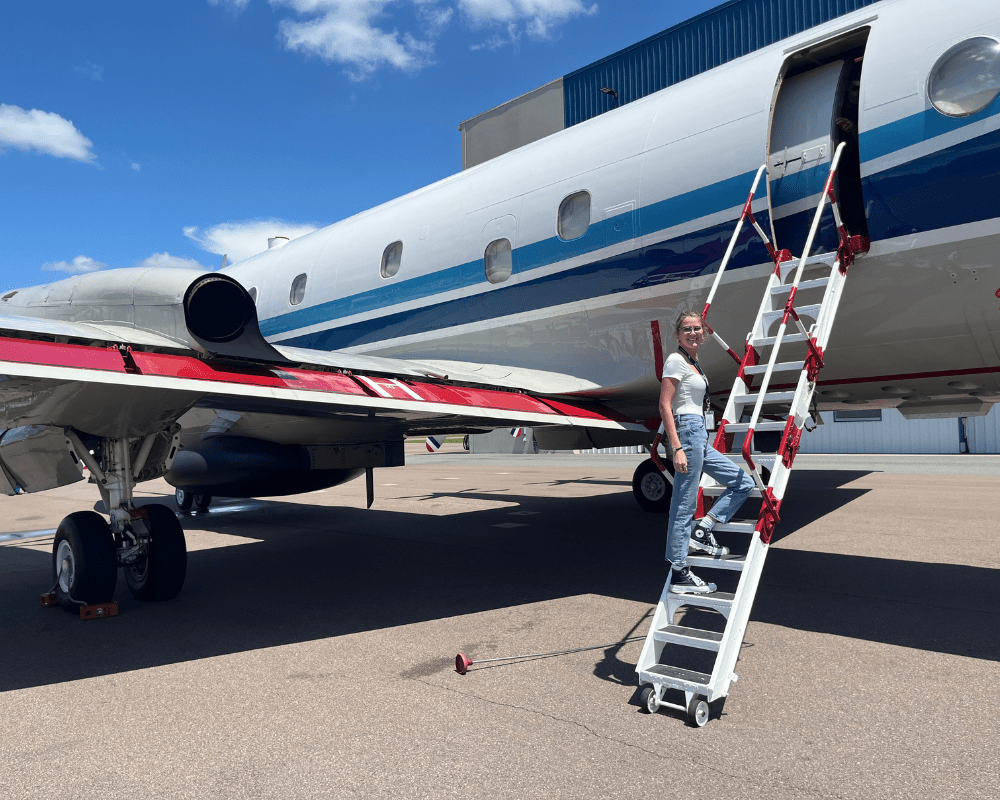
Looking Ahead
Danica’s experience is a testament to the powerful connection between classroom learning and real-world application. As future scientists and engineers prepare to lead in fields like atmospheric science and meteorology, opportunities like this bring their education to life — quite literally above the clouds.
By Sean Barnier
An Unexpected Opportunity
When people say, “Shoot your shot,” they usually don’t mean it literally. But in my case, a joke turned into a seat on one of the most advanced storm-chasing aircraft in the world, the NOAA P-3 Orion.
This opportunity all started back in my senior year, when Dr. Wadler had lined up a spot for me on a research flight. That mission was ultimately canceled, and I thought my chance had passed. Fast forward to this summer, when I was in Washington, D.C., for the NOAA Lapenta Internship. I reached out to Dr. Wadler again and jokingly asked, “You can always snag me a seat this season, right?”
To my complete surprise, he responded that pre-season testing flights were happening that very week, and he had a seat available. The next day, I booked a flight back to Florida.
Why It Matters
I’ve always wanted to fly on the P-3 because of how essential its data is for forecasting hurricanes. The aircraft’s observations feed directly into forecast models and give meteorologists real-time data that helps save lives. The uncrewed aircraft systems (UAS) being tested on these flights represent emerging technology that may become standard tools during my future career. Seeing them in action was an exciting opportunity I couldn’t pass up.
I participated in two test flights on June 26 and 27. Each had a specific objective: to test the UAS systems that are planned for use during this year’s hurricane season. The first flight focused on the Black Swift S0, and the second tested the Dragoon Coriolis system. Both missions flew off the west coast of Florida.
Inside the Flight Experience
One of the most unforgettable moments was sitting in the cockpit during takeoff and landing. The P-3’s steep climbs, sharp turns and low-altitude flying (as low as 2,500 feet above water) were a sharp contrast to the commercial flight I had taken just a day earlier. The turbulence made it clear: this was no ordinary plane ride.
Throughout both flights, I listened as the scientists on board coordinated in real time. They adapted to unexpected changes and made critical decisions on the fly. Watching the Black Swift S0 deploy and then seeing the live data stream into the aircraft was a surreal experience. I also observed the launch of dropsondes (standard atmospheric data-collection devices) and got to see how their results compared to those gathered by the drones.
A New Perspective on Research
Having used P-3 data in my own research before, this experience brought new appreciation for the behind-the-scenes work required to collect it. The level of coordination, focus and expertise it takes was eye-opening. I can only imagine the intensity when flying through an actual storm. This flight gave me a rare look into a world few get to witness, but one that plays a vital role in keeping people safe during hurricane season.
Gratitude for a Rare Opportunity
I’m incredibly grateful to Dr. Wadler for taking my offhand joke seriously and giving me this once-in-a-lifetime opportunity. Flying aboard NOAA’s P-3 was not just a thrill; it was a meaningful, humbling experience that deepened my passion for atmospheric science and gave me a clearer view of what a career in this field might look like.
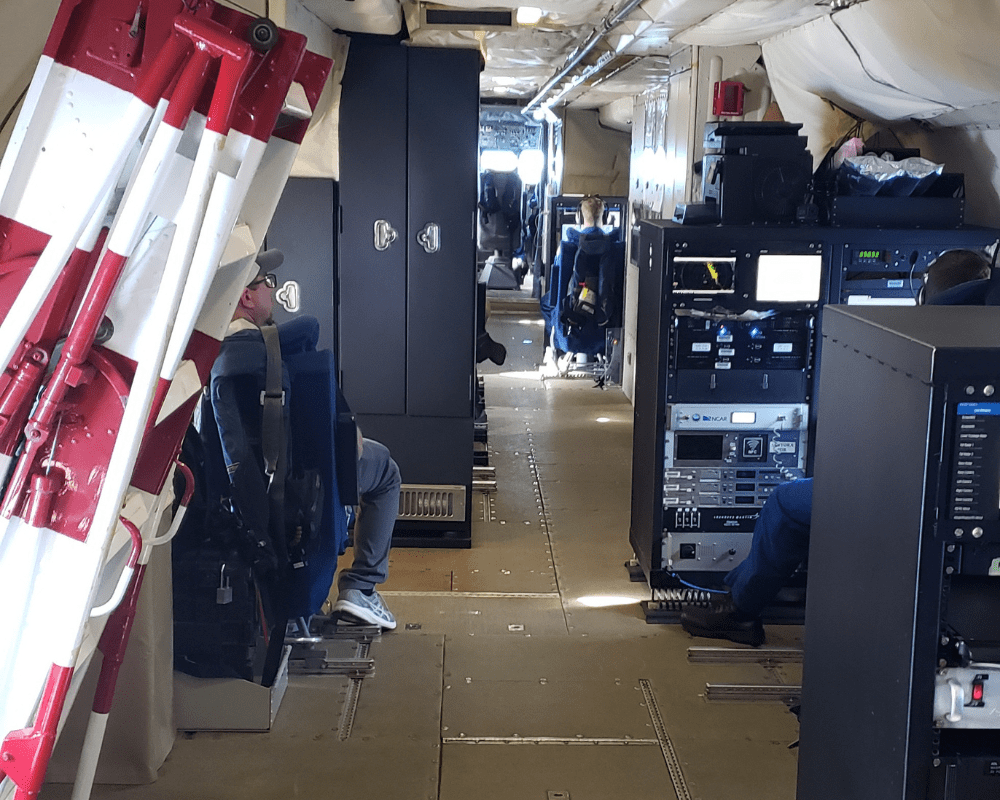
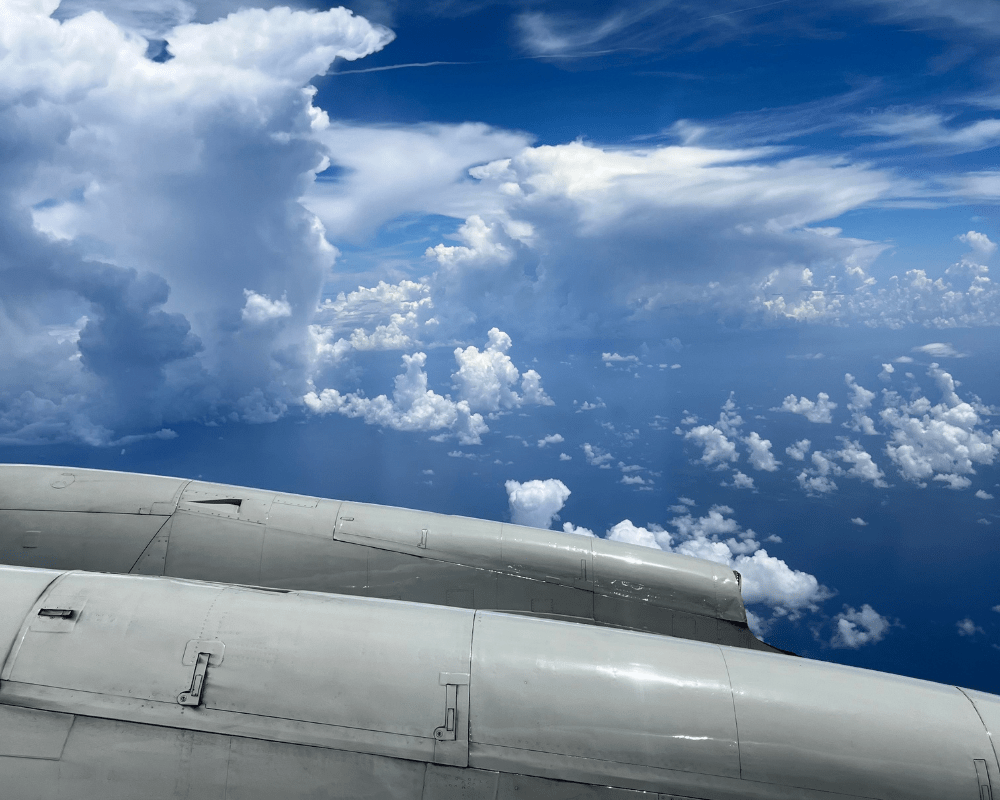
"I’m incredibly proud of Dr. Josh Wadler and his students. Josh’s commitment to innovative research and his passion for creating meaningful, hands-on learning opportunities set a remarkable standard in the field. By engaging students in real-world projects and fostering critical thinking, he equips Embry-Riddle students with not only technical expertise but also the confidence and problem-solving skills they need to excel in their future careers,” said Dr. Thomas Guinn, department chair.
Insights
 Worldwide College of Aviation Associate Professor Dr. Linda Vee Weiland shares insights and knowledge on the air traffic industry.
Worldwide College of Aviation Associate Professor Dr. Linda Vee Weiland shares insights and knowledge on the air traffic industry.
How to Become an Air Traffic Controller Explore human factors psychology, a field that blends psychology, engineering and design to improve safety, efficiency and user experience.
Explore human factors psychology, a field that blends psychology, engineering and design to improve safety, efficiency and user experience.
What is Human Factors Psychology Learn how to become an aerospace engineer at Embry-Riddle Aeronautical University. Discover diverse careers, hands-on experiences and specializations in the aerospace industry.
Learn how to become an aerospace engineer at Embry-Riddle Aeronautical University. Discover diverse careers, hands-on experiences and specializations in the aerospace industry.
How to Become an Aerospace Engineer




